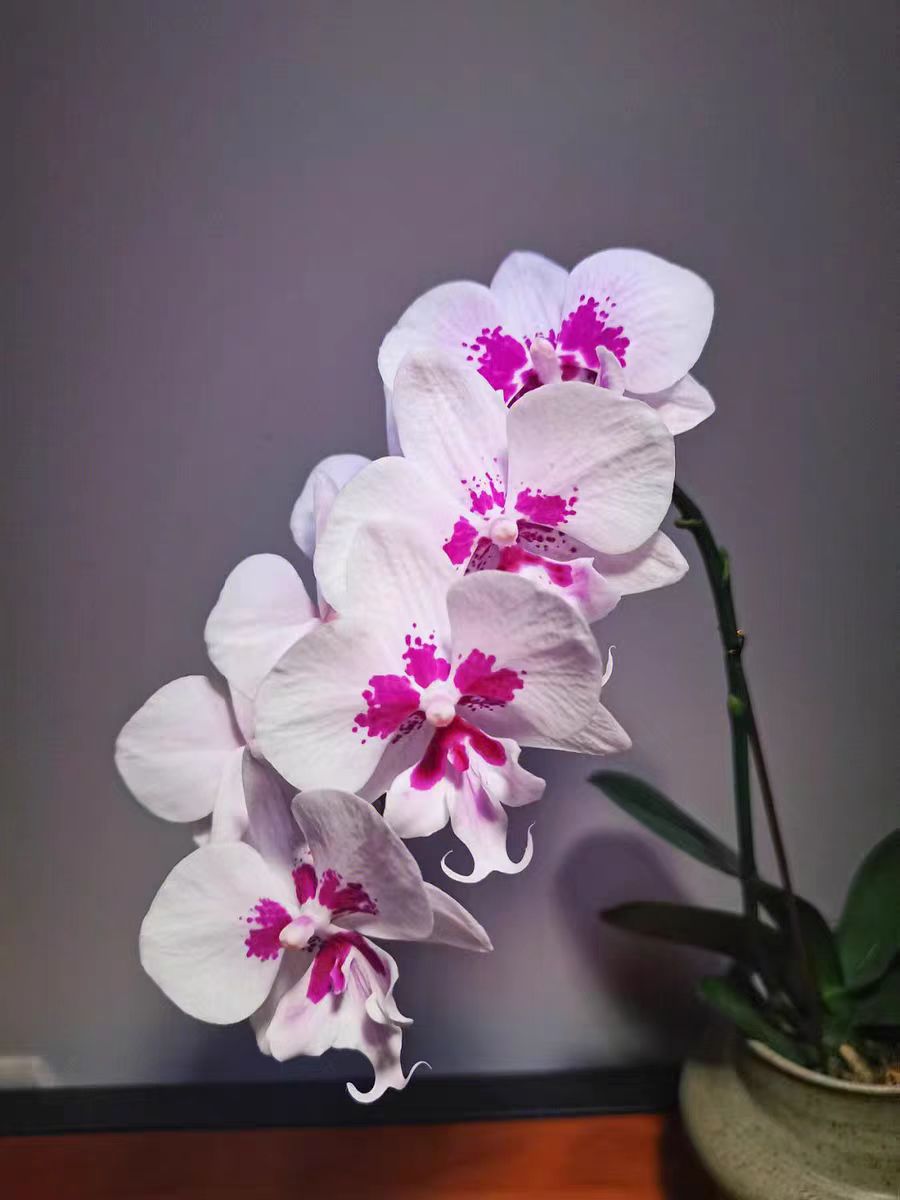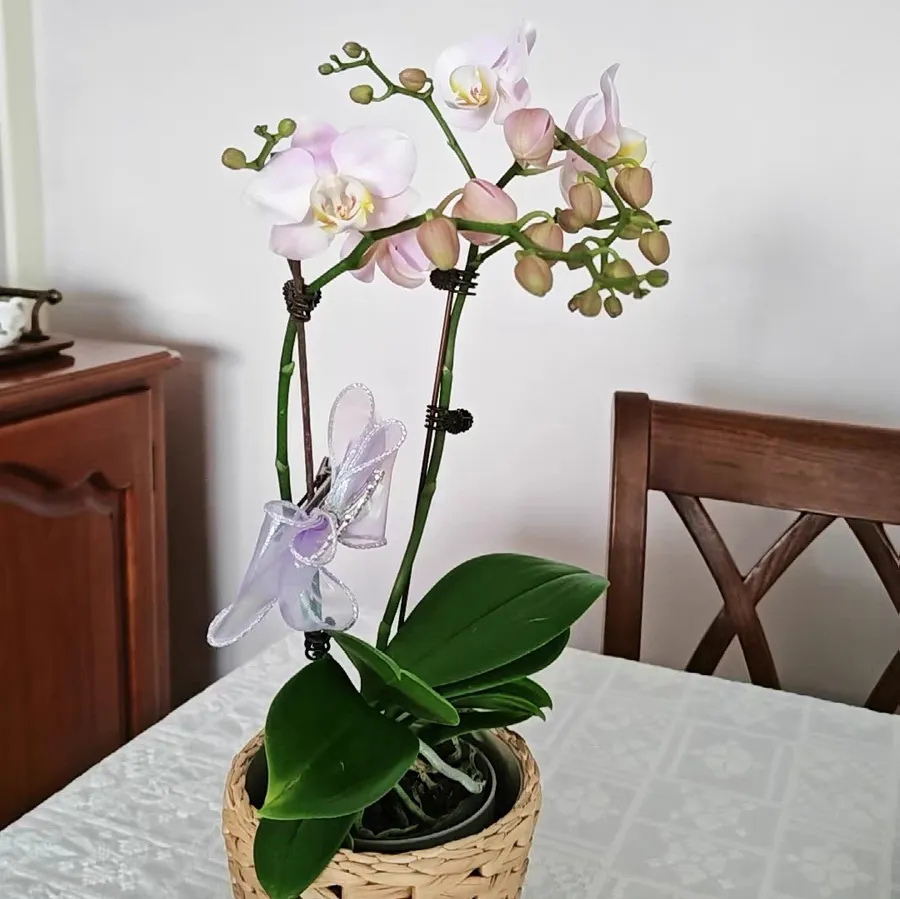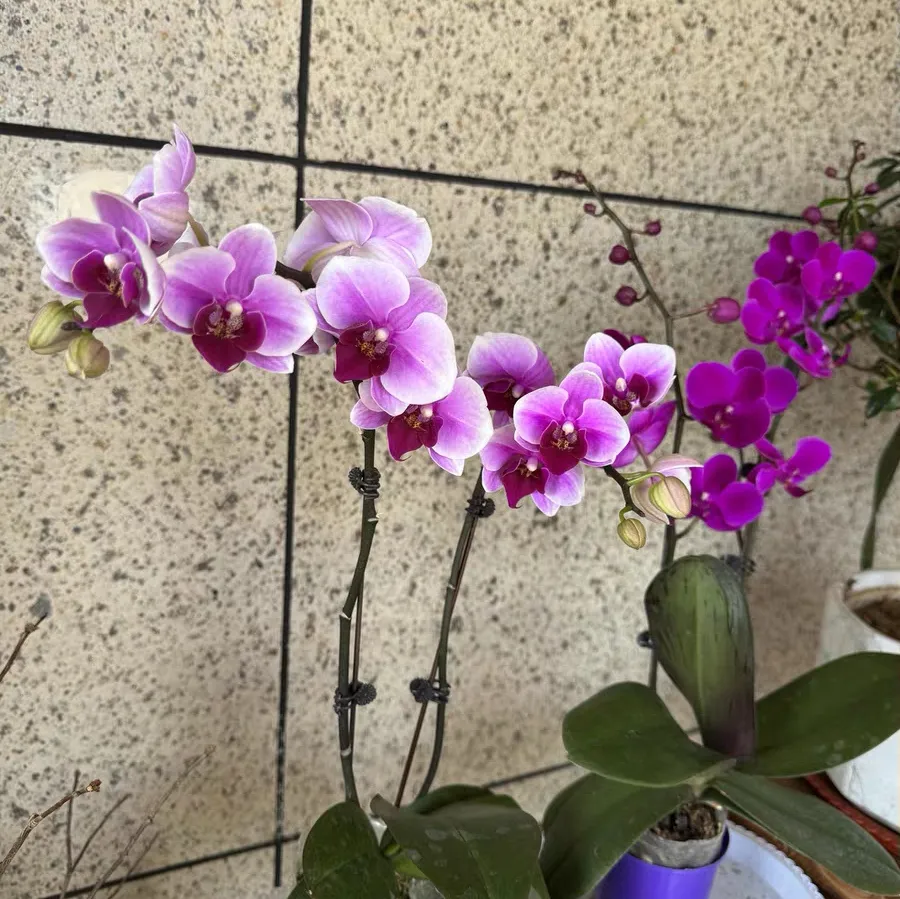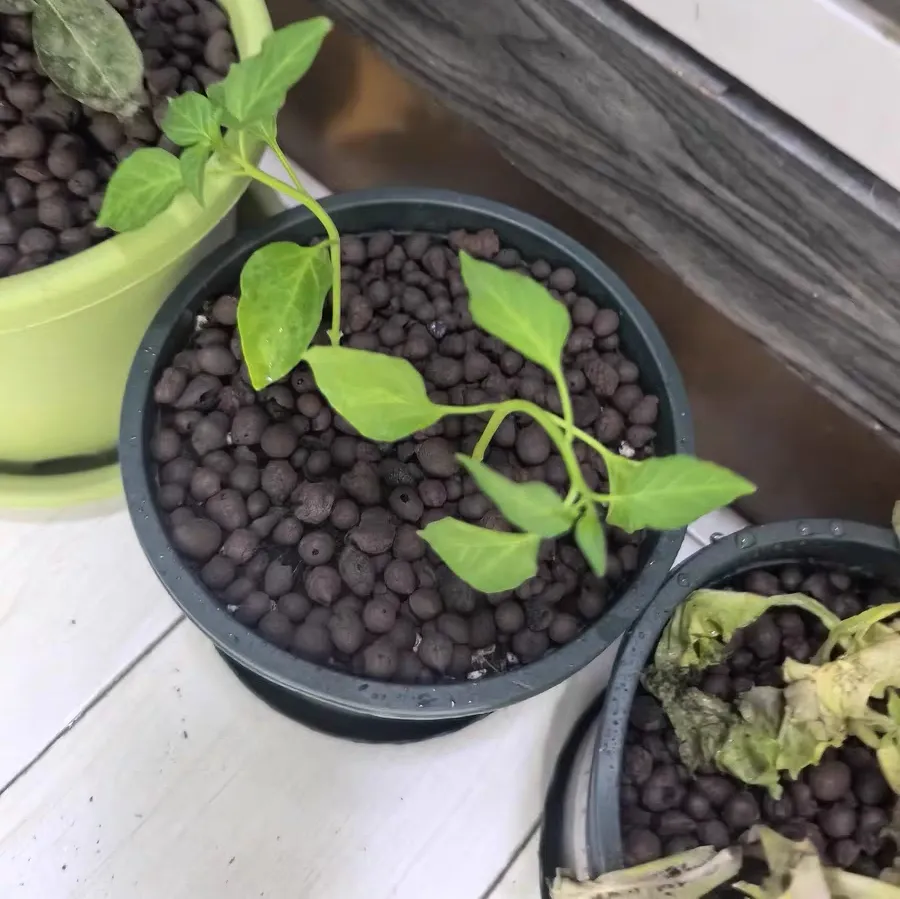Phalaenopsis orchids are highly popular ornamental flowers. During the maintenance process, repotting is an important step. However, if too much force is applied during the operation, it will cause serious damage to the plant. Will Phalaenopsis orchids die if too much force is applied during repotting? What are the hazards of using excessive force?
Phalaenopsis orchids are epiphytic plants, and their roots are different from those of ordinary plants. They not only undertake the functions of absorbing water and nutrients but also perform photosynthesis. These roots are delicate in texture and covered with aerial roots on the surface, which are used to absorb water and air. Once damaged, they are difficult to recover. The most direct hazard of using excessive force during repotting is to cause the roots to break. When the roots are forcibly pulled and broken, the absorption function will be greatly reduced, and they cannot provide sufficient water and nutrients for the plant. Parts such as the leaves and flowers that originally rely on the roots for nutrition will show symptoms such as yellowing and softening of the leaves, and withering and falling of the flowers due to insufficient nutrient supply.
In addition, using excessive force may also damage the base of the Phalaenopsis orchid's stem. The base of the stem is a crucial part connecting the roots and the above-ground part. If it is damaged by external force, it is prone to pathogen infection. In a humid environment, bacteria and fungi are likely to grow at the wound site, causing the plant to rot. Once the rot spreads, the life of the entire Phalaenopsis orchid will be threatened, and in severe cases, it will lead to the death of the plant.
Moreover, repotting with excessive force will disrupt the stability of the Phalaenopsis orchid plant, preventing it from firmly rooting in the new growing medium. With damaged roots and a swaying plant, it is difficult for the plant to quickly adapt to the new environment, and its normal growth rhythm is disrupted, prolonging the recovery period. A Phalaenopsis orchid that could have normally bloomed in the appropriate season may have its growth and development hindered due to improper operation during repotting, and it may even miss the blooming period and fail to normally form flower buds and bloom.
Although there are many risks associated with using excessive force during the repotting of Phalaenopsis orchids, it does not mean that the plant will definitely die. If the damage is minor, promptly disinfect the wound, place the plant in a well-ventilated, shaded environment with appropriate humidity for maintenance, reduce the frequency of watering, and avoid wound infection. The plant still has a chance to grow new roots and gradually resume growth. However, if the damage is severe, with a large number of broken roots and serious damage to the base of the stem, the difficulty of saving the plant will be greatly increased.
In order to avoid the harm caused to Phalaenopsis orchids by using excessive force during repotting, it is necessary to ensure that the growing medium is appropriately dry before repotting, making it easier for the plant to separate from the growing medium. During the operation, be careful and try to operate gently along the growth direction of the roots. If the growing medium is compact and difficult to separate, you can use tools to carefully loosen the growing medium around the plant. Repotting is intended to enable Phalaenopsis orchids to grow better. Only by mastering the correct method and avoiding excessive force can we take good care of these beautiful flowers and allow them to continue to shine in the new environment.
Will Phalaenopsis orchids die if too much force is applied during repotting?

Share with
Tagged in :




Leave a Reply